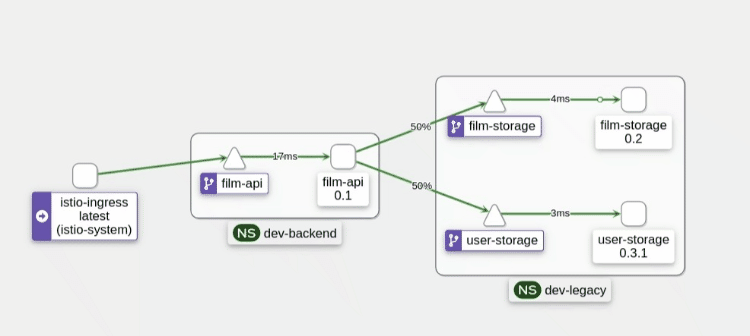This repository represents a Service Mesh workshop based on Istio.
We can test the application by calling the api endpoint. It mandatory some steps if we're using minikube:
Firstly, we must execute the minikube tunnel command.
Secondly, we're going to request against the mesh, so we need to know the IP:
IP=$(kubectl get svc -n istio-system istio-ingress -o json | jq -r '.status.loadBalancer.ingress[0].ip')Once we have the correct IP, we can execute the request:
TOKEN_PREMIUM_USER=eyJhbGciOiJIUzI1NiIsInR5cCI6IkpXVCJ9.eyJ1c2VyIjoicHJlbWl1bSJ9.mtZhdDIN6fpmWV0pOFeGotL6UJwVkrQ5gkYk6FHiED8
curl -H 'Authorization:'$TOKEN_PREMIUM_USER $IP/api/v1/filmsKiali shows the information about the service mesh traffic. This information is helpful since we can see the Istio objects configuration, possible issues and the traffic dashboard.
Working with Minikube, we can open the Kiali dashboard with the following command:
istioctl dashboard kialiNow, we can go to the Graph tab and select all the namespaces to see our traffic ecosystem.
NOTE: If you can't see traffic in the animation, you have to generate traffic recalling the service, for example: using the previous call with the
watchcommand.
This repository contains four applications that will be used to demonstrate Istio capabilities.

